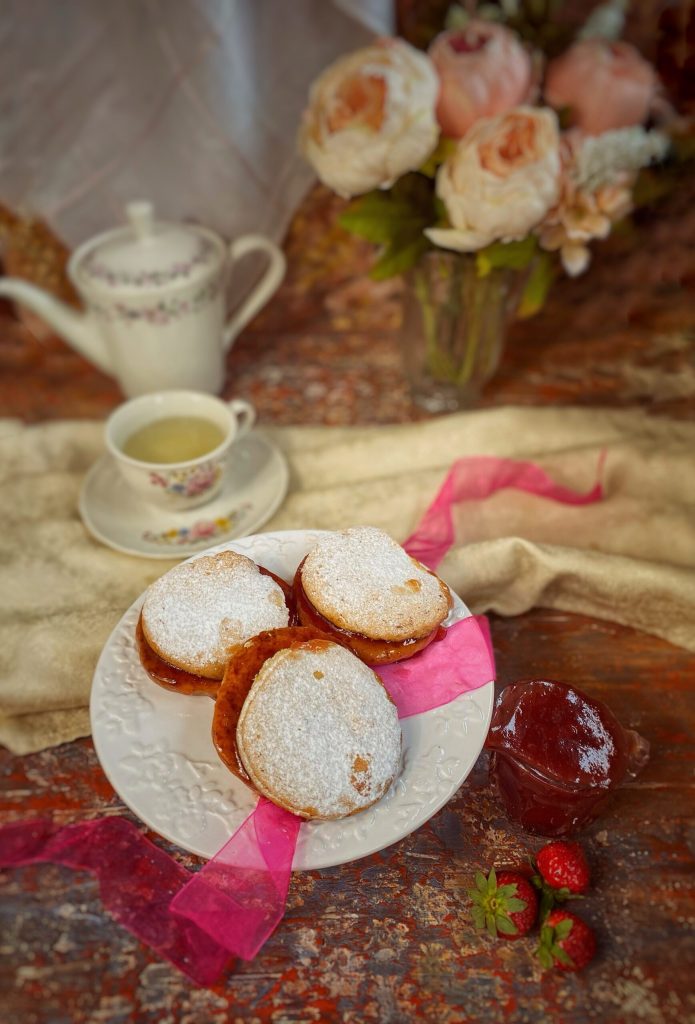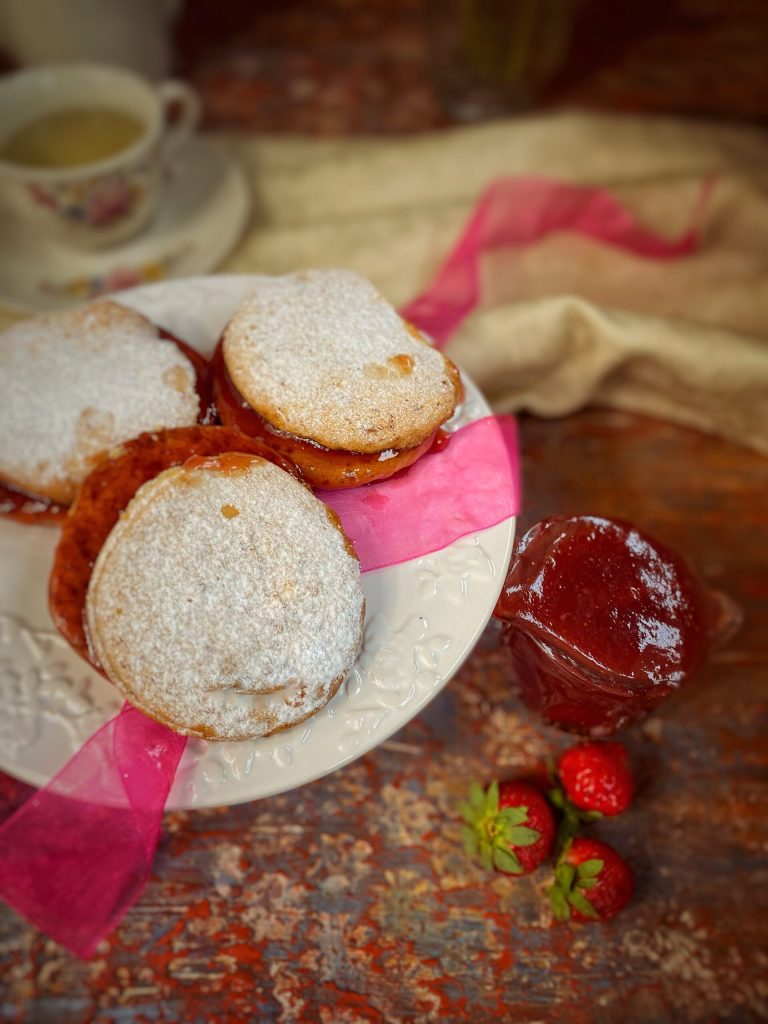The alfajores are a dessert popular in many Latin American countries during the Spanish rule.
▶▶The name comes from the Andalusian Arabic al-hasú which means “the filling”.
▶▶The “Latin American alfajores” are today a dessert very different in appearance, taste, and traditions compared to the Spanish version from Andalucia, which is almond paste-based and typical for Christmas.
▶▶The Peruvian alfajores are composed of two baked disks joined by a layer of manjar and dusted with powdered sugar. Usually cornstarch combined with a small amount of flour is used.
▶▶▶ The filling is Peruvian strawberry manjar, which is a cream based on milk and sugar enriched with a strawberry puree.
On the blog, you can find another recipe for alfajores, but in the Chilean version:

- Difficulty: Medium
- Cost: Economical
- Rest time: 30 Minutes
- Preparation time: 15 Minutes
- Portions: 6 Pieces
- Cooking methods: Bain-marie, Stove, Oven
- Cuisine: Peruvian
- Seasonality: All seasons
Ingredients for Peruvian alfajores with strawberry manjar:
- 7 tbsp butter
- 1/2 cup sugar
- 4 egg yolks
- 2 cups cornstarch
- 1/2 cup flour
- 1/4 teaspoon baking powder
- to taste salt
- to taste powdered sugar
- 2 cups milk
- 1 1/4 cup sugar
- 9 oz strawberries
- 2 tablespoons cornstarch
Tools
- 1 Pastry Ring
Steps
For the Peruvian alfajores: combine all the ingredients, add 2 tablespoons of water, work the dough and let it rest in the fridge for 30 minutes.
Cut out disks using a pastry ring about 1.2 inches in diameter.
Bake in the oven at 350°F for 10 minutes.
Let cool.
For the strawberry manjar: heat the milk in a bain-marie, gradually add the sugar and blended strawberries, finally the cornstarch. Cook for 1 hour and 10 minutes.
Fill the disks with the manjar and serve dusted with powdered sugar.

FAQ (Frequently Asked Questions)
What is the version of the Spanish alfajores?
The Spanish version of alfajores consists of two or more cookies joined by a sweet filling and usually dipped in chocolate, glaze, or powdered sugar.
The filling can be dulce de leche or honey, but also fruit, chocolate mousse and others.What is Peruvian manjar?
Manjar blanco is a term used in Bolivia, Colombia, Ecuador, Panama, and Peru to refer to similar dishes traditionally prepared by slow-cooking pure milk, sugar, and often with the addition of other ingredients like vanilla, fruit juice, and cinnamon.
In Peru, Manjar is a traditional sweet spread during the Viceroyalty of Peru to other parts of Hispanic America, with different names and preparation variants such as “arequipe”, “dulce de leche”, “manjar”, “milk manjar”, etc.
It originates from the medieval Spanish manjar blanco during Lent and, as proposed by Francisco Martínez Montiño, it could also be used to fill brioches, doughnuts, cakes, other sweets, and pastries, as can be read in the recipes from his book “The Art of Cooking, Pastry, Cake-Making, and Preserving” (1611).
In Peru, the two versions of the medieval European manjar blanco were known: the one made from shredded chicken breast, milk, sugar, and thickened with ground rice flour – from which the famous dish of Peruvian cuisine known as “ají de gallina”- and the manjar blanco without chicken breast, with only milk, sugar, and rice flour used to prepare various compositions in Peruvian pastry, such as the traditional suspiro de limeña, the frejol colado or the tejas of Ica.
There is another variant, based only on milk (fresh, evaporated, or condensed), sugar, and vanilla, from which another variety is derived, prepared with Lima beans, traditional of Ica.
Moreover, there are different types of manjar blanco based on legumes, which can vary by regions, also using different fruits, such as mango, still a Peruvian recipe, and cherimoya.

